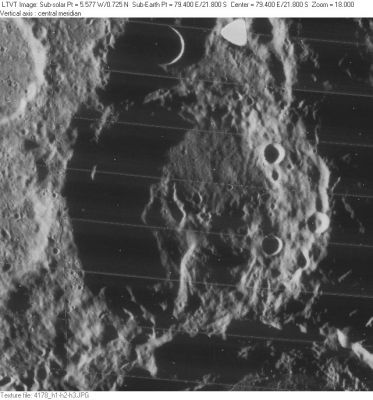Hecataeus
Contents
Hecataeus
|
Lat: 21.8°S, Long: 79.4°E, Diam: 167 km, Depth: 4.78 km, Rükl: 60 |
Images
LPOD Photo Gallery Lunar Orbiter Images Apollo Images
Maps
(LAC zone 99A3) USGS Digital Atlas PDF
Description
Description: Elger
(IAU Directions) HECATAEUS.--An immense walled-plain, 115 miles in length, on the S.E. of Vendelinus, with a very irregular rampart and a conspicuous central mountain. It is flanked W. and E. by other large enclosures, which can only be seen to advantage when libration is favourable.
Description: Wikipedia
Additional Information
Depth data from Kurt Fisher database
- Cherrington, 1969: 4.78 km
- Satellite crater Hecataeus K is on the ALPO list of bright ray craters.
Nomenclature
- Hecataeus (c. 550 BC–c. 476 BC), was a Greek philosopher. He flourished during the time of the Persian invasion. After having travelled extensively, he devoted his time to the composition of geographical and historical works.
- Crater Hecataeus B was called Antoniadi by Wilkins and Moore, but the IAU did not accept this name. Instead, the official name Antoniadi went to a crater on the moon's far side.
- Crater Hecataeus D was called Raurich by Hugh Percy Wilkins and Antonio Paluzie-Borrell, but the IAU did not accept this name.
- Salvador Raurich Ferriol was a Spanish astronomer (1868-1949).
LPOD Articles
Bibliography
Hecataeus B ("Antoniadi") and Hecataeus D ("Raurich"): Wilkins and Moore.
